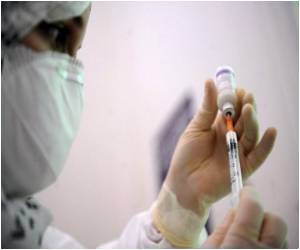TBVI's research partners, many of whom came together in Switzerland in early February 2011, are carefully optimistic about the past year's advances in vaccine research.

Dr Christian Lienhardt, who heads the Research Movement of the Stop TB Partnership painted a clear picture. Tuberculosis research lacks money on every level. Lienhardt happily noted that funding specifically for TB vaccine research has increased in the past two years but much more support is needed. In that light, it is a great breakthrough that the European Parliament accepted a resolution to support the research and development of tuberculosis vaccines. An overwhelming majority of the parliament recently voted tuberculosis vaccine research onto the agenda of the European Commission, calling upon the commission to explore new funding channels.
Successfully developing a new vaccine seems closer than ever before. A broad collection of candidate vaccines is currently being researched and several of those have now reached various stages of clinical trials. This collection of candidates is called the vaccine pipeline and researchers present at the research gathering in Switzerland were very positive about its content. Lienhardt referred to the pipeline as 'robust' and challenged researchers and other partners to maintain it.
New vaccines are crucial in the fight against tuberculosis. Research shows that the introduction of a new vaccine could reduce the number of new TB cases by ninety percent within thirty to forty years. This makes the development of vaccines an essential part of the Stop TB strategy. Hard work over the past decade is starting to pay off with some promising results but the process of developing, testing and licensing new vaccines is a complicated and lengthy one. In order to battle tuberculosis, several different vaccines will be needed; so-called ‘priming’ vaccines that can be given to newborns and ‘boosting’ vaccines to be used for infants, adolescents and adults. Vaccines should not only prevent people from initial infection, they also have to prevent people with a latent infection from developing active tuberculosis. In addition to this, vaccines have to be safe for HIV-infected people.
The process of bringing a candidate vaccine from initial discovery to licensed vaccine involves different phases of testing and trying. Many candidates will not survive this process and trials are expensive enough to only allow the very best candidates to enter. Therefore dozens of candidate vaccines are needed. Currently, TBVI supports a portfolio of 39 candidates that are in different phases of development and testing. The organization is hopeful that two of those candidates could make it to the market by 2020 and another two around 2025. Worldwide, there are about ten candidates in various stages of clinical trials and about 50 more in development.
Funding is key in this process, however the TBVI research gathering brought up another major requirement for success; collaboration. Group efforts and partnerships are valued important by researchers. WHO's Uli Fruth is nothing less then excited about what is happening at this front: "During this meeting, I was delighted to see a plethora of collaborations that the consortium has stimulated amongst the partners, which in the absence of the TBVI structure would probably not have happened."
Advertisement
Source-Medindia













